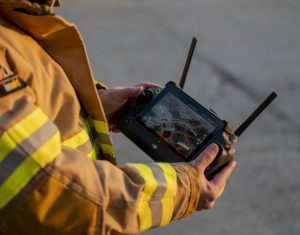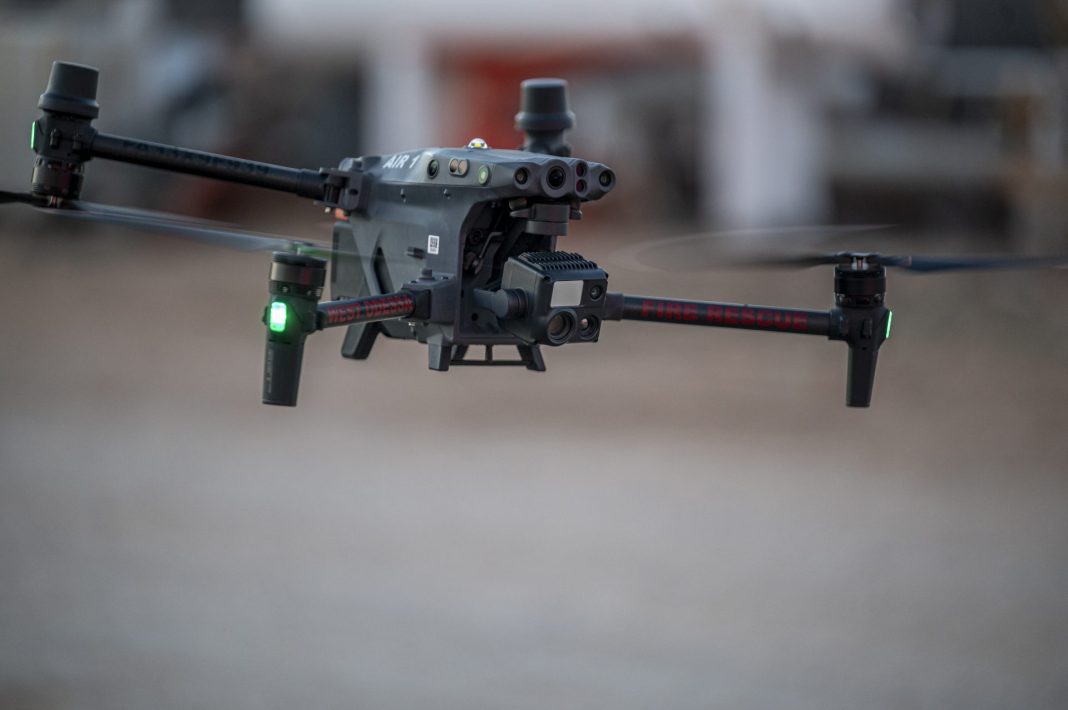It was around 3 a.m., when the drones went up in the air.
The West Odessa Volunteer Fire Department was called out to Highway 302 near South Tripp Avenue on Feb. 11 to assist deputies with the Ector County Sheriff’s Department and members of the University of Texas of the Permian Basin Police Department.
Law enforcement officials were chasing a vehicle when the occupants fled into the fields.
Within minutes of arriving, the volunteer fire department launched an unmanned aerial aircraft — better known as a drone —into the sky. It didn’t take long to locate the driver hiding in a nearby field.
Drones aren’t new, but West Odessa, along with the sheriff’s department, the UTPB police department and the Odessa Police Department, utilize the technology in their responses when needed.
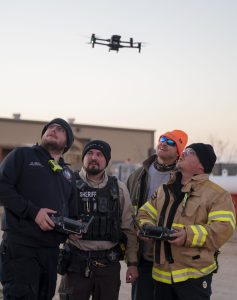
When covering an area as large as West Odessa, taking to the sky for a new vantage point can make all the difference.
“It’s such a valuable tool,” Ryan Kelly with the West Odessa Volunteer Fire Department said. ” Whether you’re looking at it from law enforcement or a fire service side, the drones’ capabilities are a major benefit.”
Currently the only certified pilot with the volunteer fire department, Kelly said two additional members, one being the department’s chief, are taking courses to obtain their Remote Pilot Certificate from the Federal Aviation Administration.
West Odessa has two drones, both purchased along with other equipment with the $1.9 million allocated to the department by the Ector County Commissioner’s Court through American Rescue Plan Act Funds.
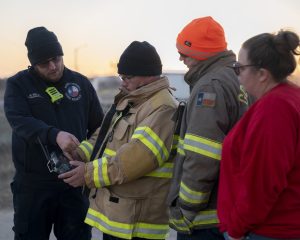
In an emergency, every second counts, Kelly said, especially when responding to vehicle accidents involving ejections.
“The sooner we can get to a location, the quicker we can help guide Odessa Fire/Rescue,” Kelly said. “This allows for a quicker response to get folks care and gives them a better chance at survival.”
Calls related to oil field work involving tank battery fires or gas leaks allow the department to use drones to locate issues and not risk exposure to hydrogen sulfide gas.
Responding to grass fires and using the aircraft helps monitor and prevent hot spots from reigniting.
For structure fire calls, the drones can also help the department plan a more strategic response.
“We can put the drone out within 60 seconds and see where the main source of heat is coming from through the roof, and it’ll better help us attack the fire and potentially minimize the damages to the individual’s home and property,” West Odessa Volunteer Fire Department Chief Austin Harden said.
Harden, a recreational flyer, said the possibilities of using the drones in a service capacity have encouraged him to obtain his license. Kelly has been licensed since 2019.
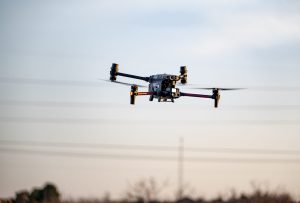
Plans to attend the Texas Public Safety Robotic Summit in March in Burnett, Texas will also give the trio access to presentations, live field demonstrations, training scenario stations, round table conversations and more from experts.
Future goals for the department are to have enough volunteers trained to create its own division.
“People at first thought these were toys rather than a tool,” Harden said. “These are very vital tools that we are using, and they’ve been a tremendous asset to our department.”
